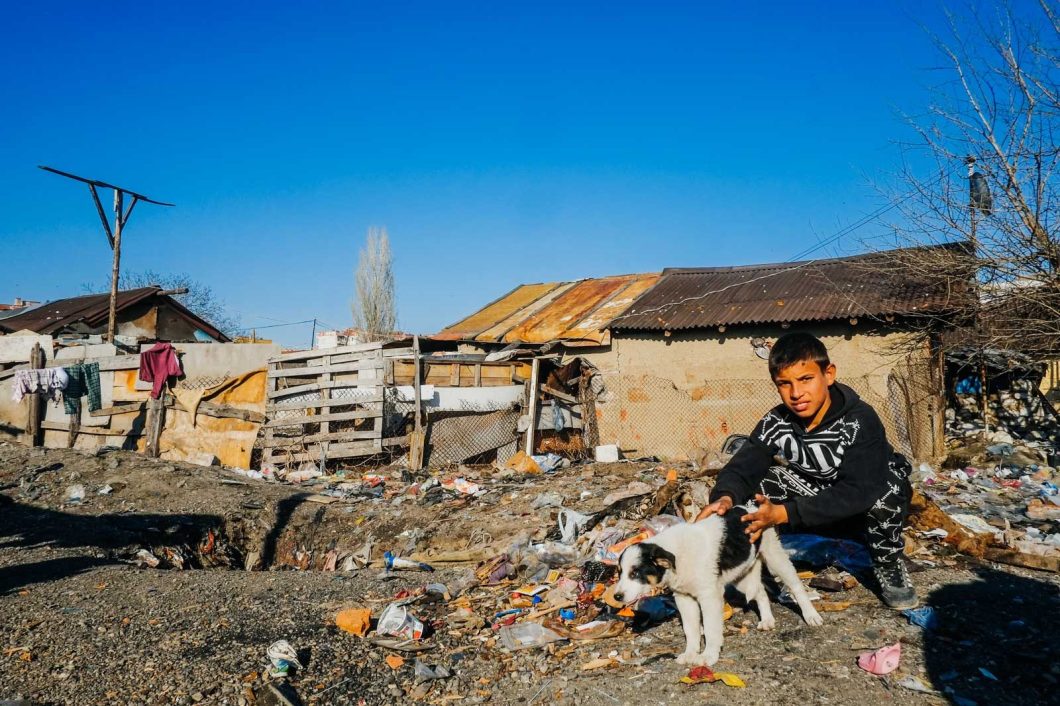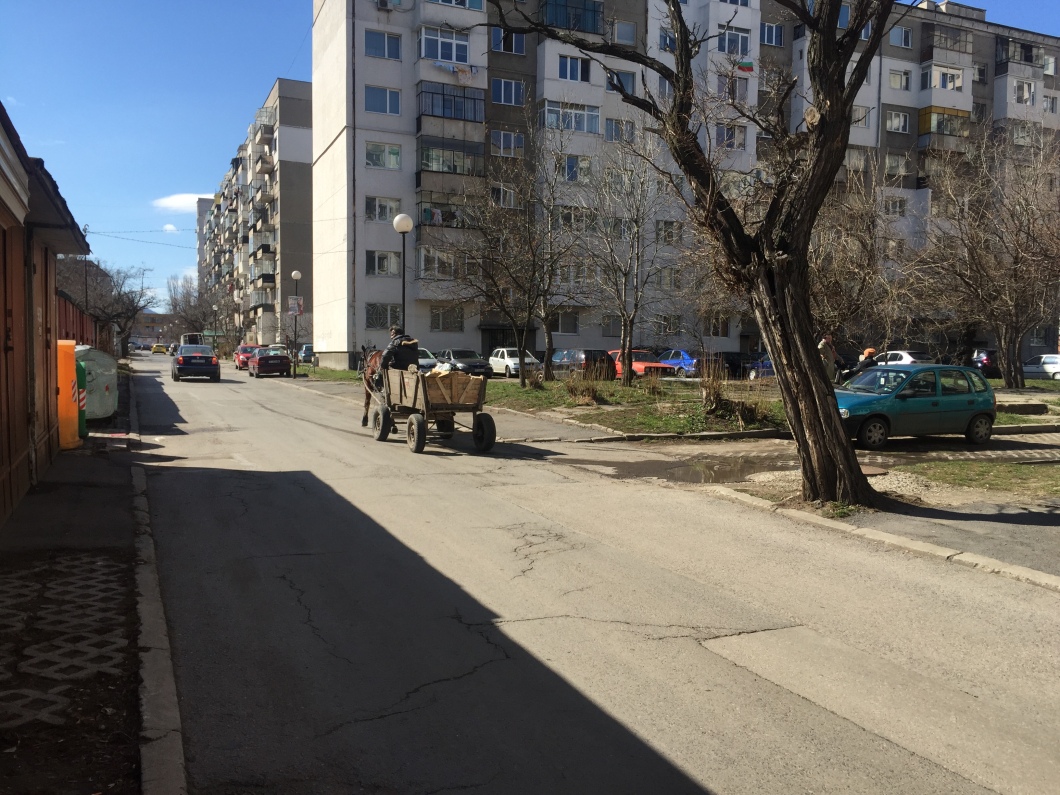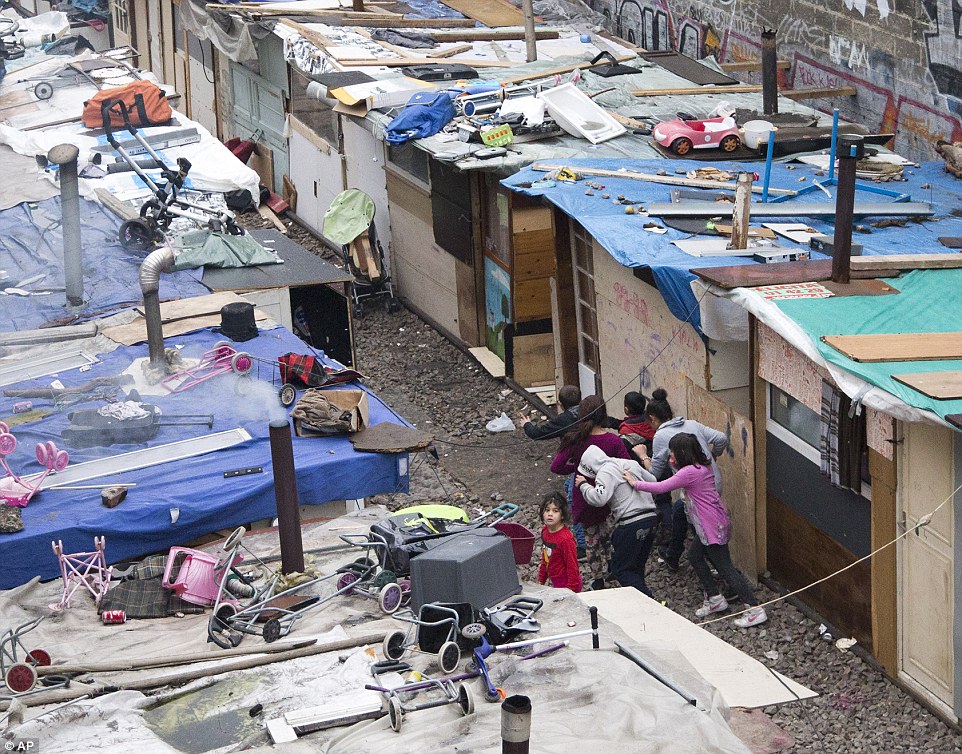
Europeans… you are making the Roma people this way!
From far east Asia to Latin America, asylum seekers and those looking for fair treatment and humanitarian refuge look at Europe as a safe haven for equality, minority rights, and progressiveness. Europe has opened its doors wide to refugees from different parts of the world in times of plight and wars, absorbing millions of them into its educational and vocational sectors.
Despite this rosy image of the overall humanitarian status in Europe, this is not the full picture, even in the most liberal and progressive states. The reason here is ironic: Europe’s largest ethnic minority, the Roma gypsies, which had lived alongside Europeans for six centuries, is still predominantly unintegrated, living on the fringes of extreme poverty, homelessness, and insufficient literacy.
A quick Google search about the Roma yields several results about illegal evictions and bulldozing of Roma shelters, racist rhetoric by different European governments against this group, inherent racism that is barring them from joining the job market and schools, as well as deportations. This is not limited to the states in Eastern Europe, such as Hungary and Romania, but also those in the West, such as France and even Denmark. It has only been in the last decade (est. 2005), also known as the “Decade of the Roma”, that the EU has decisively taken action towards actively maximizing its integration efforts. The unbinding and highly-contested, EU Framework for National Roma Integration Strategies (NRIS) has been the poster child for these efforts – allocating money for different initiatives set up by each involved member government. Despite its prospective optimism, the Initiative has paved a disappointing path towards severe criticism of many governments.
While sentiments of anti-semitism, homophobia, or misogynism can make the average European cringe in disapproval, a study has shown that anti-gypsyism isn’t even considered a type of racism in Europe, and the majority of Europeans wouldn’t want to be neighbors with a Roma gypsy, or to have one studying in the same classroom with their children. The main reason for that is the predominant belief that the Roma hold different values and ethics than other Europeans that make them unfit to integrate within Europe. There is a belief too that the Roma prefer their nomadic lifestyles, not pursuing education, and exploiting state support instead of looking for a stable job. These beliefs support the belief that the Roma are inherently unfit within European culture.
Many politicians have ridden the far-right wave, trying to sell their nationalistic election campaigns through anti-gypsy rhetoric. Governments ignore the European Union’s condemnations and carry on with unhumanitarian and illegal deportations, evictions, and bulldozing of Roma shelters. In many countries, millions of Euros that the EU allocates to help in housing the Roma and creating work opportunities for the Roma are spent by local European governments on different irrelevant projects.
It is true that Roma’s lifestyle to a large extent reinforces those beliefs and credits them. However, this reasoning should not be an excuse for legitimizing the failure of integration of the Roma into European societies, but rather should be seen as a coping mechanism for the Roma to co-exist with the systematic racism that they are subject to.

The Birds and the Bees
Given their nomadic lifestyle, the Roma population has had a reputation of being hard to track in terms of statistics – whether in regards to their demographics or geographics. This becomes particularly frustrating to national governments when it comes to integration. Just like other ethnic minorities and their influence within a society, the rise and fall of these numbers become even more crucial for the election of candidates, the development of public policy, and to overall shape society’s attitude.
Nevertheless, these problems are nothing new for many governments, the main issues arise when the grossly increasing Roma population comes into conflict with the decreasing natality of the non-Roma population.
As demonstrated in an Infostat analysis, “the share of children aged 15 years and less are at non-Roma population roughly 17%, at Roma population, it is almost 37%, which is more than twice. According to projections, the number of Romas in Slovakia will increase, although the growth rate will gradually slow down.”
The main frustration for the fluctuating growth rate of the Roma can be attributed to their low standard of living – this makes it increasingly difficult for governments to gather, distribute, and improve information and funds on the number, structure and territorial distribution of Roma population. Ultimately, however, a government’s interference is increasingly necessary in order to mitigate differences and improve integration. This has serious implications for the standard of living on the rest of the general populations.
Specifically, when analyzing the habits of their high birth rate, there are multiple rationalizations that come into question such as, whether it is a problem of economic conditioning or challenging traditional customs. In most cases, it’s both.
The economic case is widely exemplified in Romania, where due to the Roma’s direly poor conditions, lack of education, and young-marriage customs – their families heavily subsist on government subsidies for each child. The dismal combination of all three of these conditions lends itself to a self-fulfilling pattern of little to no job prospects and poor living conditions.
Meanwhile, the traditional lifestyle plays a role in carrying on the thousand-year-old custom of being married at a very young age (16-25). This gives way to younger women beginning to give birth very early and therefore raising the fertility rates very high. Consequently, for many, once they are married is the time when they also drop out of school. The even bigger debate, however, comes into play when the care for these children and their futures are precariously neglected.
On the whole, with a lack of any optimistic future possibilities and stuck in an innately condemned culture, this ethnic group is forced to be more preoccupied with their everyday struggles rather than securing their dignity.

Unwelcome Neighbours
The Roma gypsies have been on the move for centuries, and many of them led lifestyles and careers that were quite harmonious with their nomadic lifestyle. However, several reports by Amnesty International and other human rights organizations point out to the fact that many Roma families across Europe today are forced into homelessness in several ways, making their lives in temporary shelters coping mechanisms in many ways, and not a chosen lifestyle.
With the exception of the Roma who choose the nomadic lifestyle, reasons for homelessness among the Roma are many. First of all, it is common in many regions in Europe for residents to be against the Roma sharing with them their neighborhoods. According to a study by Gallup, 33% of Romanians would not agree to have Roma neighbors. Amnesty International quoted stories of Roma Italian residents who were told that real estate agencies do not agree to let Roma people rent their estates. Also, prohibitions on buying lands make it harder for the Roma to find a place to settle with their large families.
Secondly, many European countries have come under the spotlight for mass evictions of the Roma, in which their illegal residences get bulldozed without giving them a notice or even providing them with alternatives. In countries such as France, ethically-targeted evictions against the Roma have existed for years, which affected 60% of Roma families, according to the European Roma Rights Centre and the Ligue des droits de L’Homme. Several such evictions take place in Italy too.
Thirdly, many governments blame recent economic downturns and austerity measures for their inabilities to finance housing projects to shelter the Roma. However, many reports show that countries that do get funding from sides such as the European Commission end up spending this money on building camps that do not meet the proper standards of living. This is the case in Italy according to Amnesty International, where the state spends its housing money dedicated from the Roma on building remote, ethnically segregated camps that are not sanitary or well-serviced, instead of building regular residential compounds or building. In Belgrade, the EC has commissioned 3.6 million Euros to house the homeless Roma, and by the time the deadline for spending this money has been reached, 50 families were told that there was not enough money to house them, leaving them no option but to “remain in the containers and join the waiting list for the city’s inadequate stock of social housing,” according to the Commission.
Fourthly, even the Roma were allowed to live in certain residential areas, securing a stable stream of income is hard for a Roma to afford to pay the associated rents and other costs. Details on this will follow in the designated section below.
The examples shared above show that contrary to the common belief, not all Roma homelessness is caused by innate Roma desire for a nomadic life. Many Roma families resort to makeshift homes because they cannot afford normal housing, or are not welcome into one. Those makeshift homes get bulldozed often, leading to more homelessness. Hence, this lifestyle is how Roma cope with systematic racism against them.
ABC, 123, not for the Romani
Similar to the other factors of livelihood, the Romani’s high levels of illiteracy and drop-out rate are a direct response to systematic segregation on poverty and racism. This is contingent on the fact that the Roma population has the highest rate of illiteracy. According to a joint survey done by the UNDP and the FRA, 15 % of Roma adults aged between 20–24 complete upper-secondary general or vocational education.
Typically, there are two to three options for the Romani people in pursuing an education: segregated schools (separate from non-Romani people), mentally-handicapped schools, and (if they’re lucky) the “regular” schools (integrated with the other school children). No matter the level, the majority of these children suffer from mental abuse, physical bullying, and low-quality services and facilities. Even when Roma children are enrolled in non-segregated institutions they face extreme, if not traumatizing, circumstances of harassment from fellow students. They are perpetually taught that they are “stupid” or “retarded.” Inevitably, Roma kids are disincentivized to continue in school.
This is reinforced by the fact that educational facilities and services for Romani people are not well funded or prioritized – whether because of patterns of ghettoized settlement or because of raw racial discrimination. Despite the goals of the EU initiative, governments find ways to reinforce the discriminatory status quo. As Jonathan Lee, a Romani rights advocate, explained, “In Hungary, EU money is actually used to further the segregation of Roma in education through supplementary grants to support segregated schools.”
Sever Covaciu, a 32-year-old Roma man living in La Havre, France explained to The Independent newspaper: “People wonder why we come here to live like this but, for the Roma, life is much worse in Romania. In Romania, we must pay for school. In Romania, our children die of hunger. In Romania, Roma children die every day.”
The cycle becomes perpetual when the parents’ educational level is very low and the majority of household income comes from social welfare or other minuscule but inconsistent jobs. The 2014 FRA survey found that “[…] because education is directly correlated with labor market skills, inadequate education is a major factor behind Roma workers’ decreasing competitiveness.”
Didn’t Make it to the Interview
Valeri Simeonov, the Bulgarian Deputy Prime Minister, who is also the Minister in charge of integration and minority issues, once said that the Roma “are brazen, feral, human-like creatures that demand pay without work, and collect sickness benefits without being sick.” Those claims come in line with what many believe to be inherent Roma qualities, or according to The Independent newspaper, being “lazy, thieving, begging, drunken misfits, whose chief industry is to produce children.”
This belief is common due to the fact that many Roma are unemployed, and live from the welfare system, begging, or collecting recyclable bottles. Many also work as unskilled, blue-collar workers, on temporary jobs that are not bound by contracts.
However, it cannot be generalized that this is because of intrinsic differences in Roma work-ethic. Many Roma chooses those sources of income actually because of systematic racism against them.
Lack of education, discussed above, is a legitimate barrier to reaching the job market. However, according to a report by the European Roma Rights Center, discrimination bars even the university-educated Roma from reaching the interview phase when applying for jobs. According to the same report, educated Roma in countries like Slovakia always ends up working in fields related to the rights and advocacy of the Roma. These examples show that neither lack of education nor lacking willingness to work on the part of the Roma is the reason why many of them live in unemployment. Systematic racism and exclusion can significantly stand in the face of the Roma’s ability to participate in the job market too.
The same report by ERRC states that when the Roma who participated in the study where asked how did they know that they did not get a certain job because they are Roma, almost one third of them said they had been openly told by the employer or someone else, and 20 of them were told by the labor office. This can be the case even when it comes to low-paid, unskilled labor roles, where the report shows that in places like Romania, non-Roma are more likely to get such jobs, and get more paid per hour too compared to their equally skilled Roma counter-parts.
Roma who lose their job are likely to live years of unemployment until they find another one. These examples and others show that, while there are Roma who find the benefits of exploiting the system to be larger than those of contributing to it, dominating rules and prejudice in different systems make it unlikely that they find a better option in the first place.
“It’s hard to find the origins of anti-gypsyism because it is something that has grown with us in Europe, inside our societies. Romani people have been in Europe for more than half a millennium,” says Lee of the ERRC.
To him and many international organizations and NGOs, the main arguments against the Roma, whether their reliance on Child support to live, their homelessness, their lagging behind in education, and their lack of participation in the European workforce, are results for the tough system they are in. Their behaviors can be sometimes considered coping mechanisms to survive.